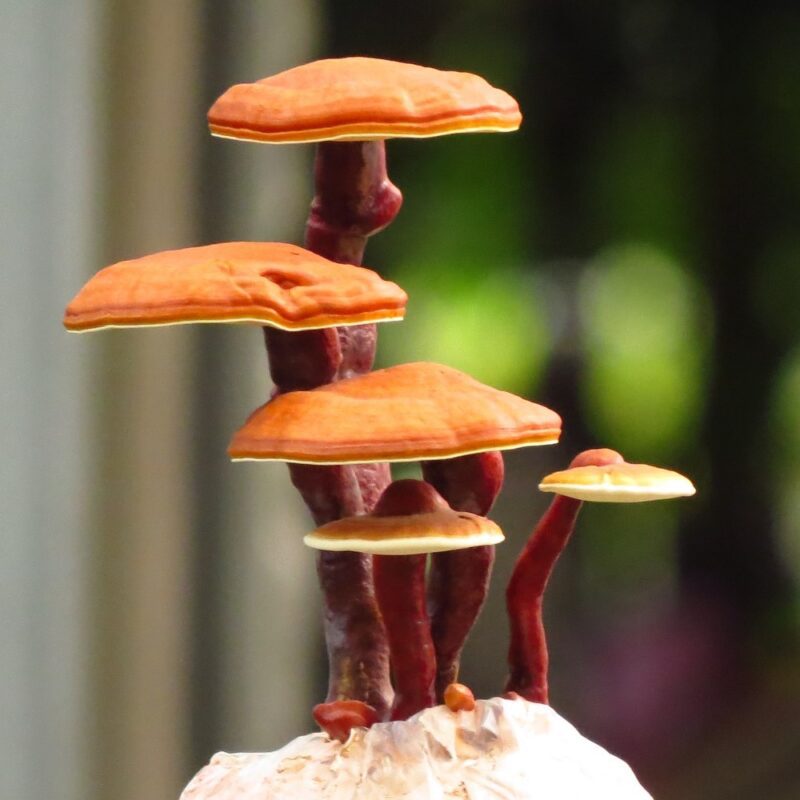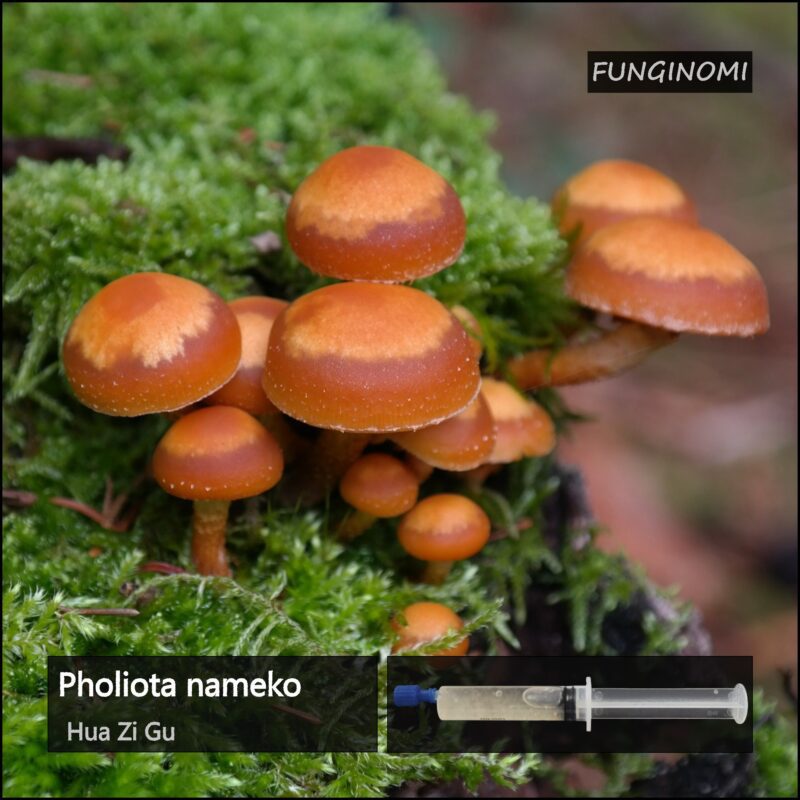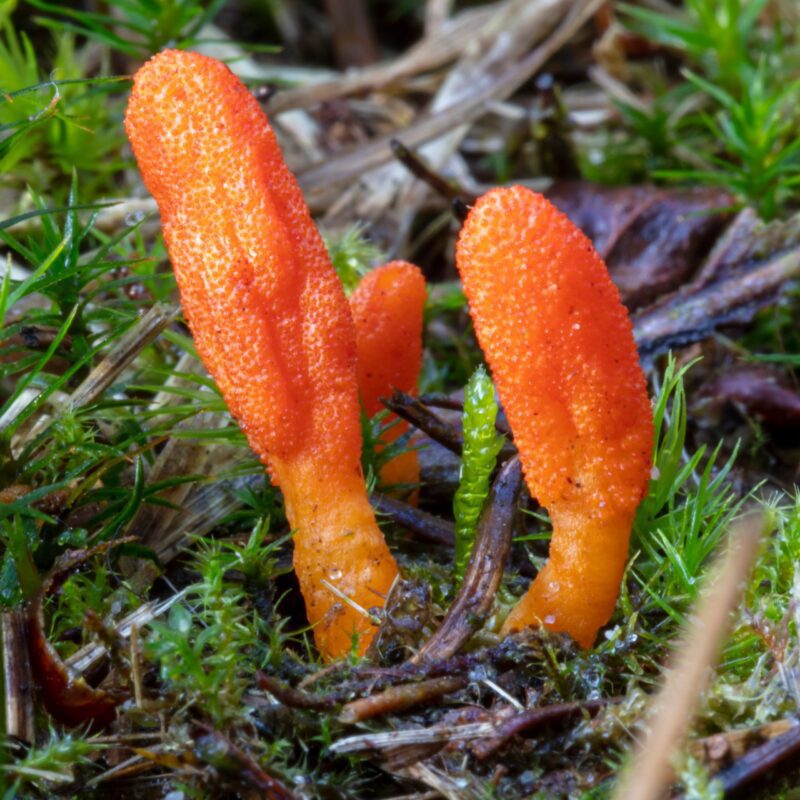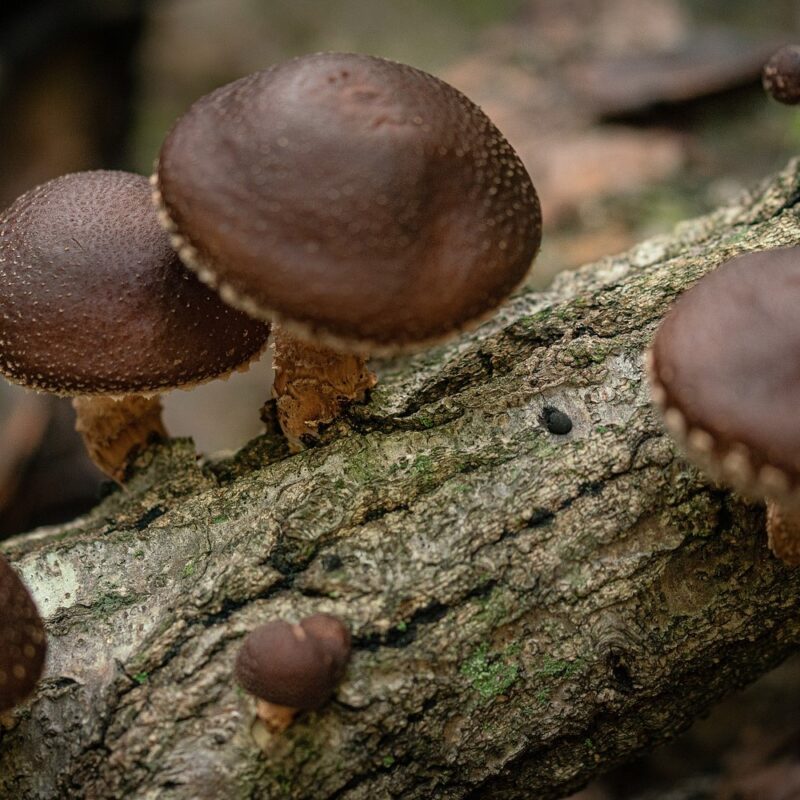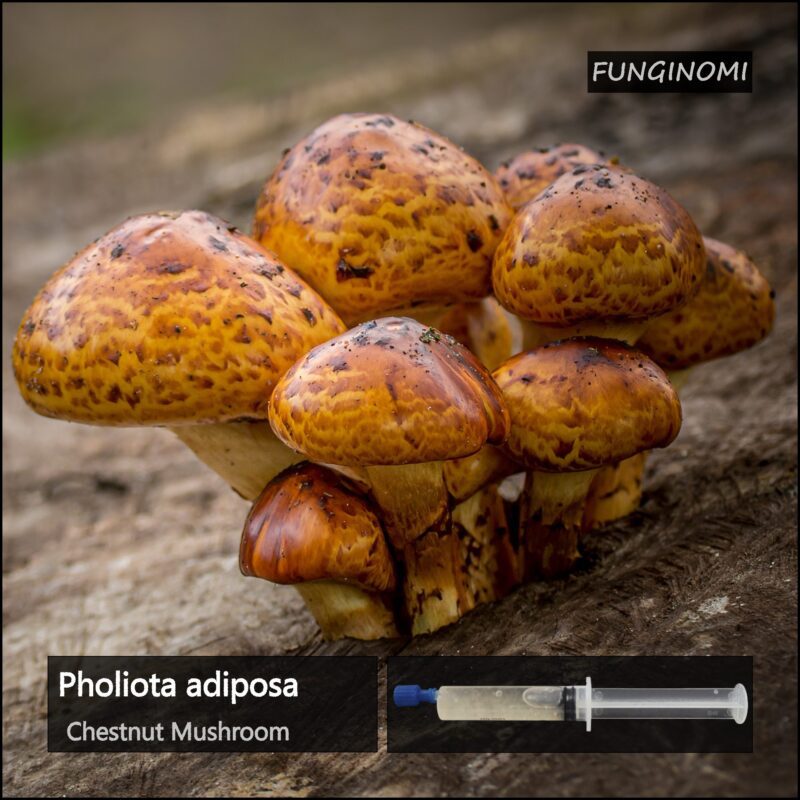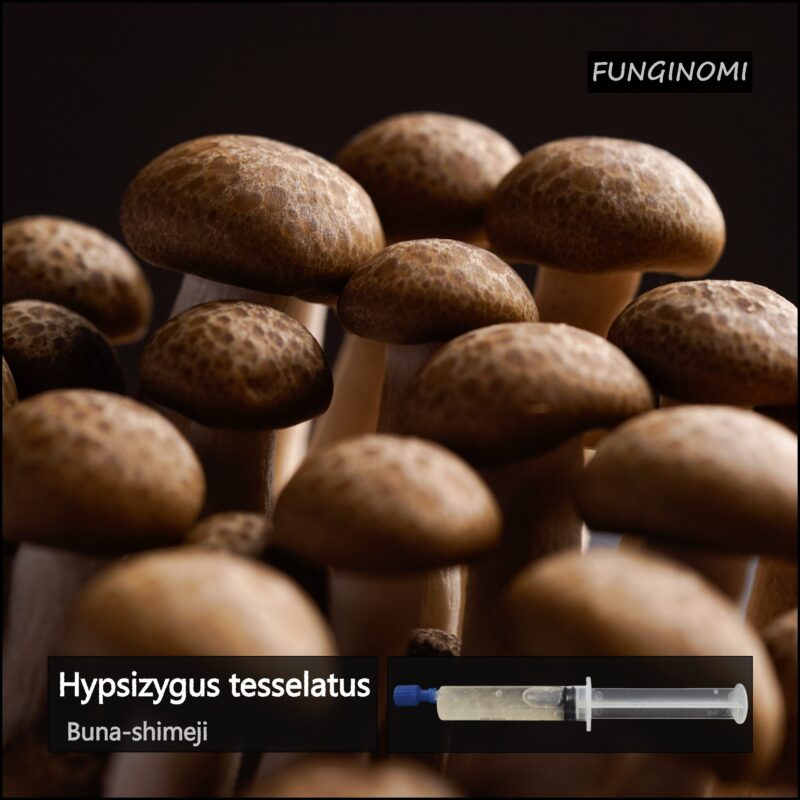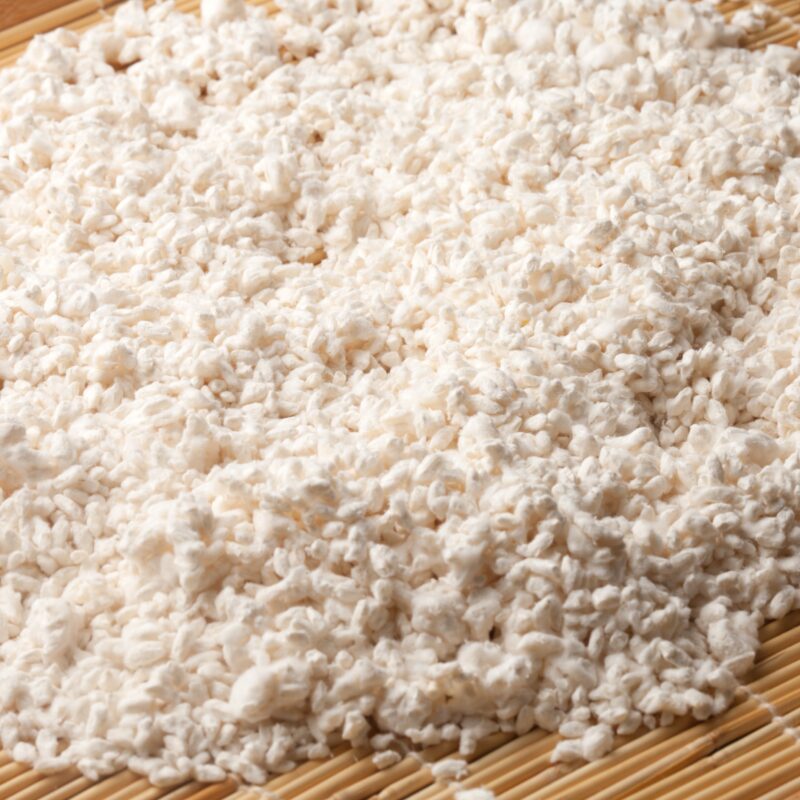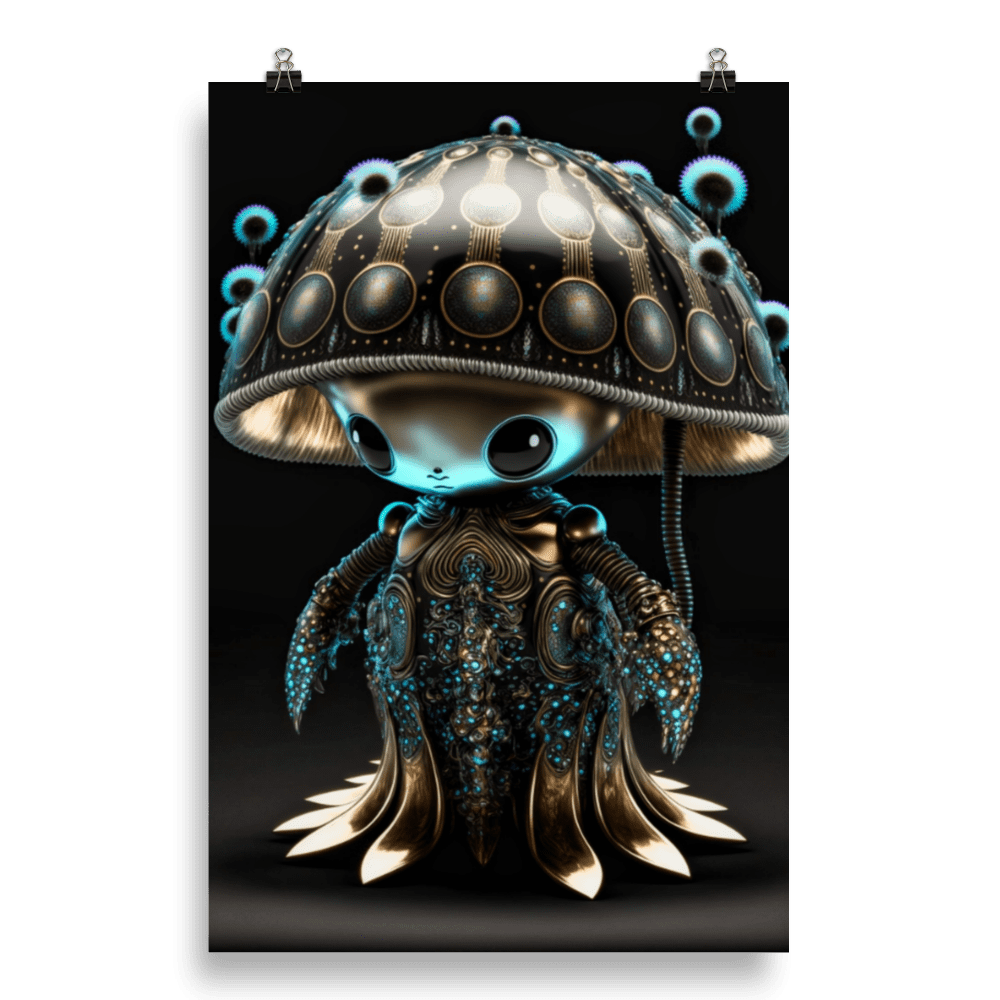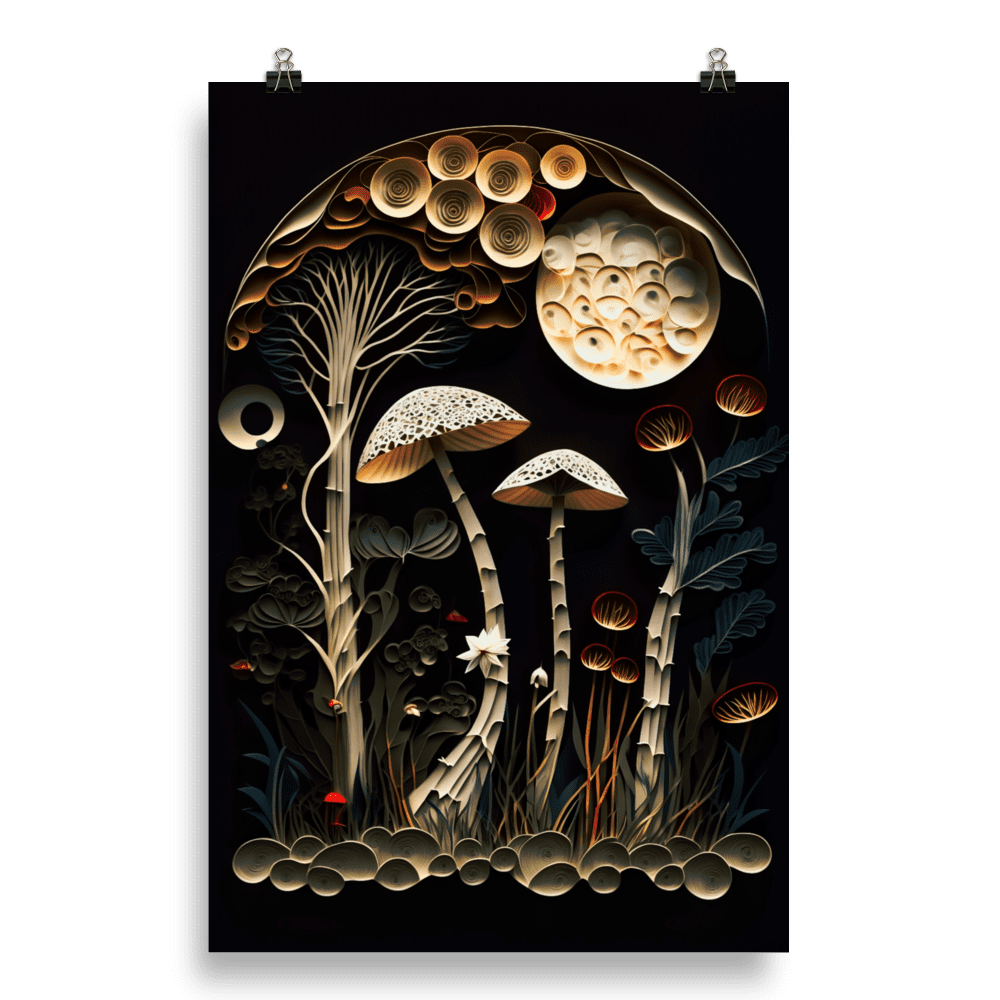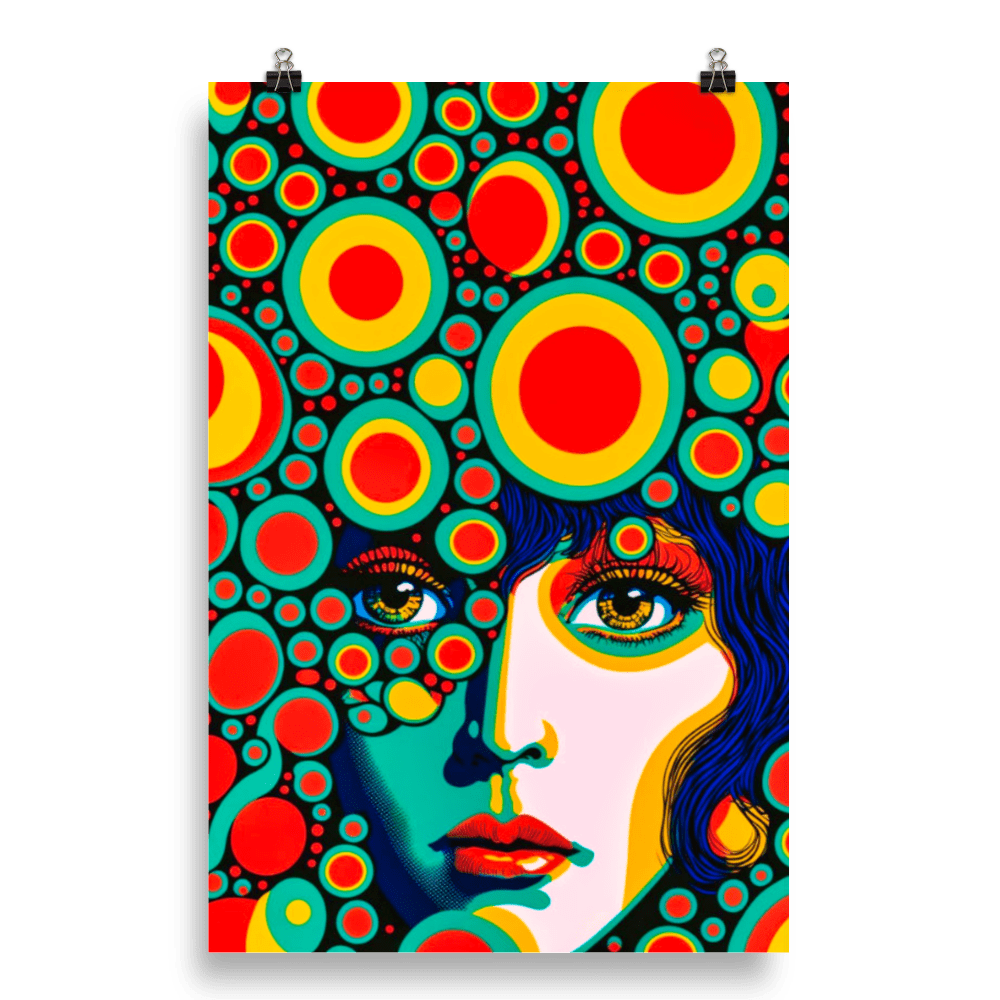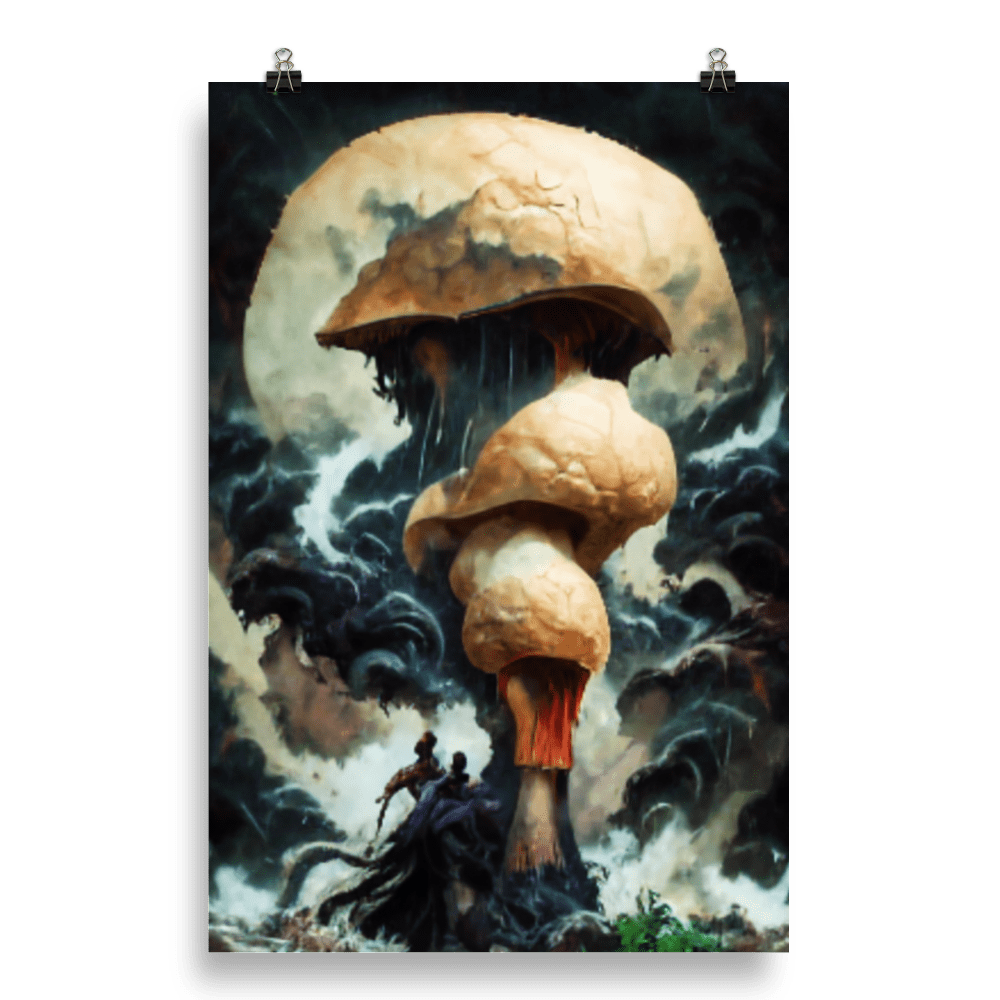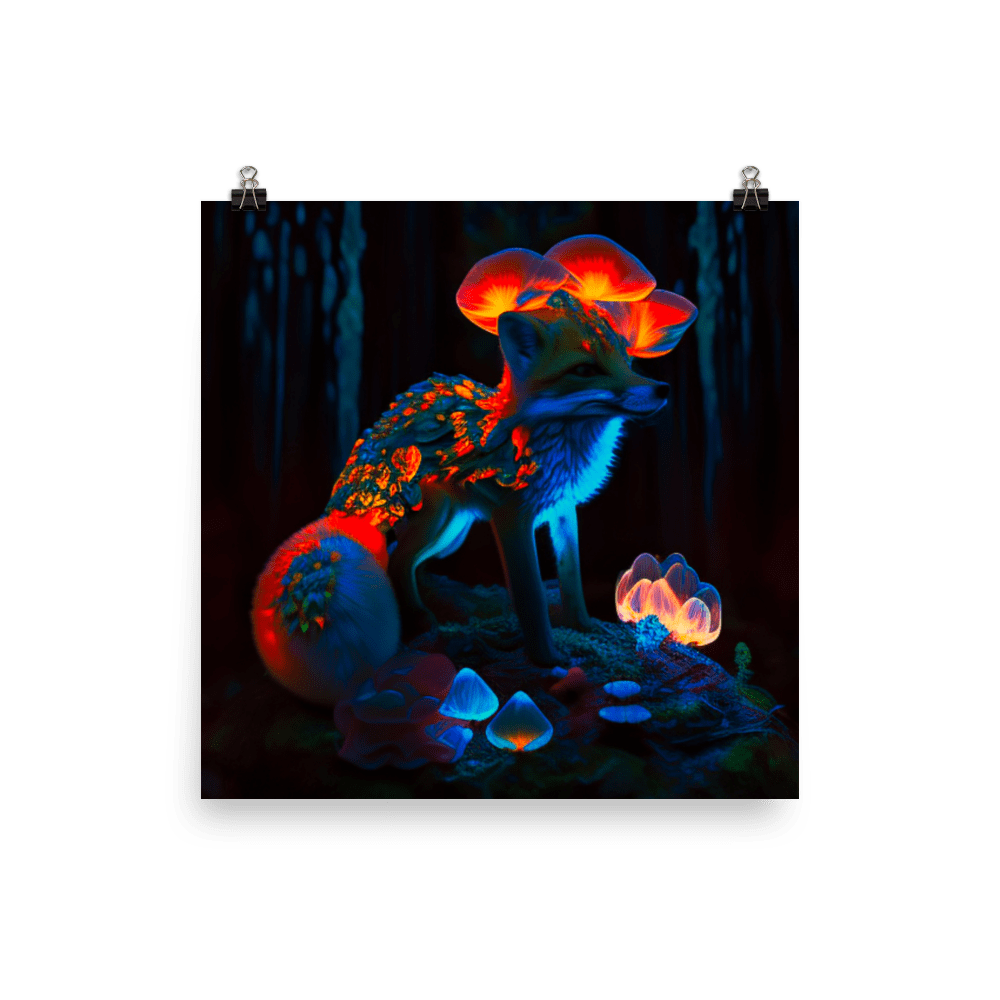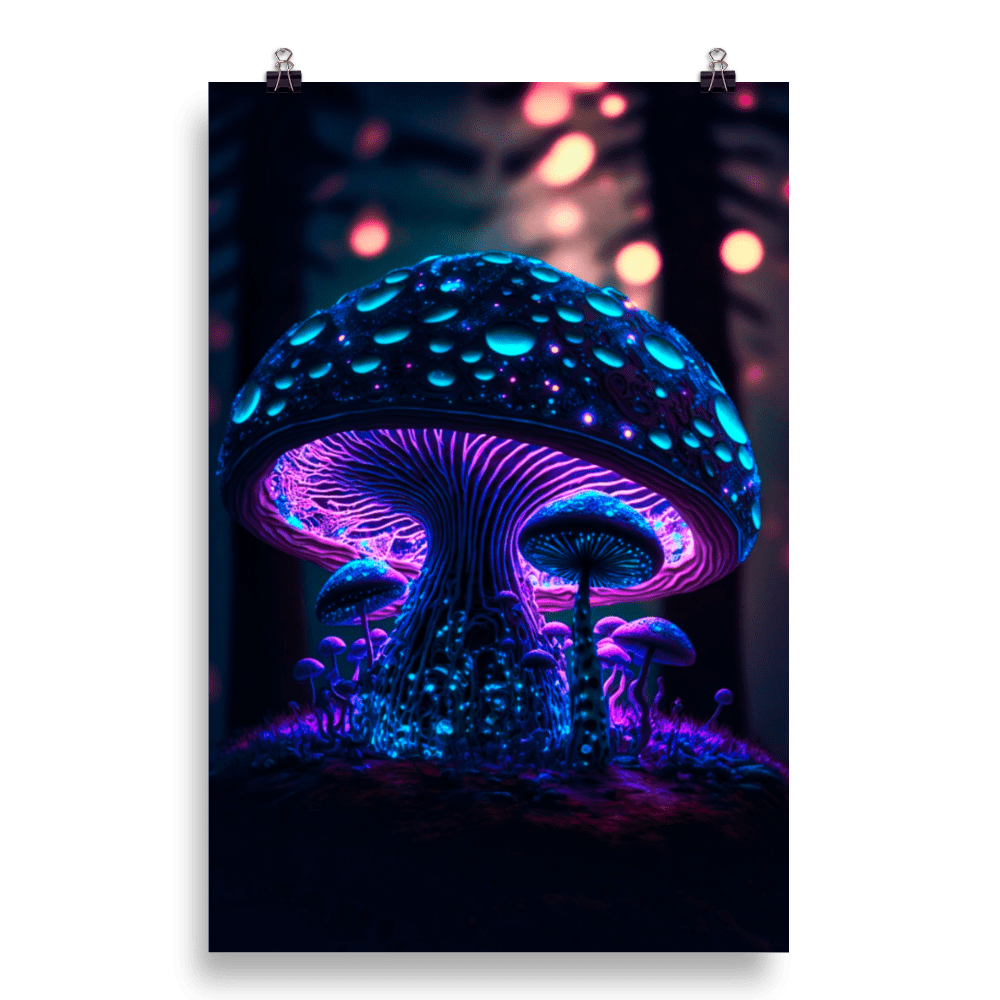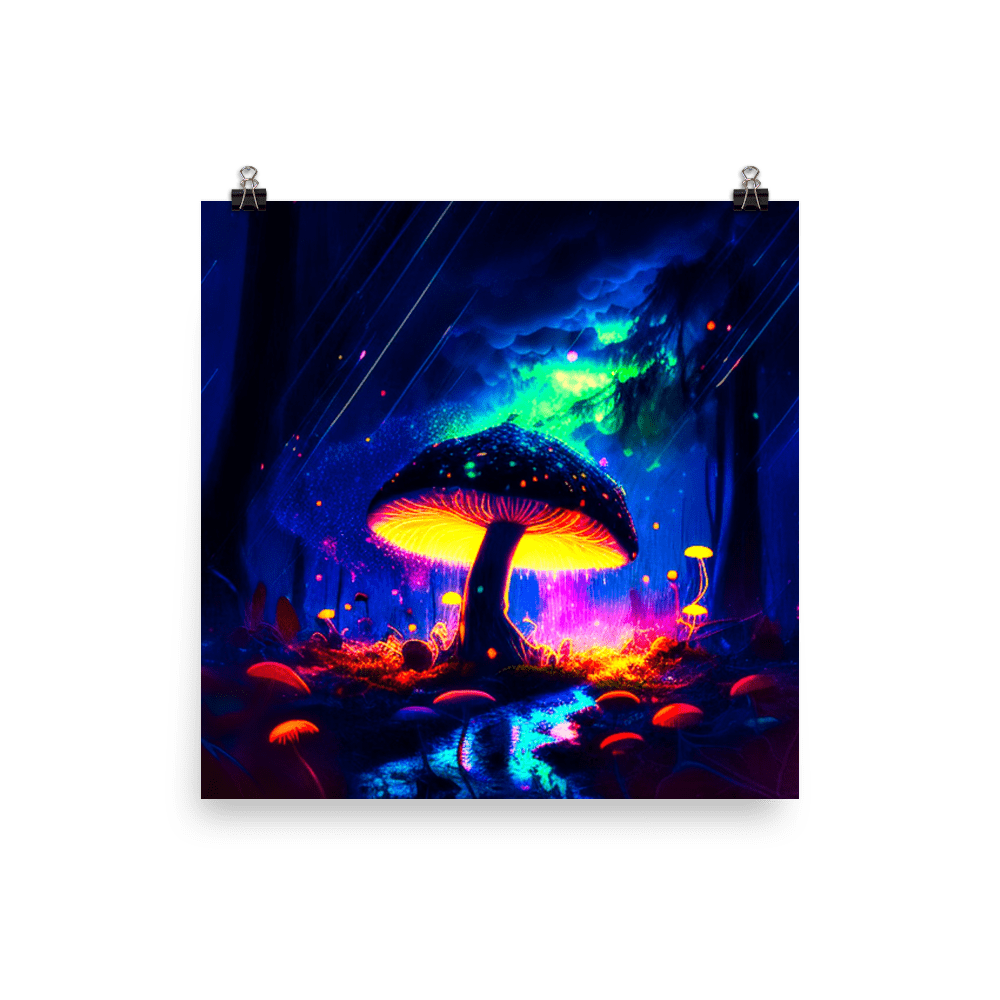Mushroom-Inspired Art and Design: A Comprehensive Guide
Introduction to Mushroom Inspired Art and Design
In the world of art and design, there is a growing fascination with the beauty and versatility of mushrooms. Mushroom-inspired art and design combine the intricate forms, vibrant colors, and mystical allure of mushrooms to create captivating works of creativity. Whether it’s through paintings, sculptures, illustrations, or even fashion and home decor, mushrooms have become a popular source of inspiration for artists and designers around the globe.
This comprehensive guide explores the enchanting realm of mushroom-inspired art and design, providing you with insights, techniques, and inspiration to embark on your own creative journey. Discover the magic that mushrooms bring to the artistic world as we delve into various mediums, styles, and approaches. Unleash your imagination and let the mycelium guide you as you explore the fascinating world of mushroom-inspired art and design.

The concept of mushroom-inspired art and design
Mushroom-inspired art and design embrace the captivating beauty and unique characteristics of mushrooms as a creative muse. Artists and designers draw inspiration from the intricate shapes, vibrant colors, and mysterious allure of mushrooms to create visually stunning and imaginative works. From paintings and sculptures to illustrations and even functional designs, this art form celebrates the fascinating world of fungi and its mesmerizing impact on the artistic realm. By exploring the diverse aspects of mushrooms, artists can infuse their creations with a sense of enchantment and evoke a connection to nature’s wonders.
The growing popularity and fascination with mushrooms in various creative fields
In recent years, there has been a remarkable surge in the popularity and fascination with mushrooms across various creative fields. Artists, designers, and enthusiasts alike have been captivated by the allure and versatility of these fungal wonders. Here are a few notable areas where mushrooms have made a significant impact:
-
Visual Arts: Mushrooms have become a beloved subject in paintings, drawings, and mixed media artworks. Artists are drawn to the intricate patterns, vibrant colors, and whimsical forms of mushrooms, incorporating them into their creations to add an element of natural beauty and intrigue.
-
Sculpture and Installation Art: Sculptors and installation artists have embraced mushrooms as a source of inspiration, crafting three-dimensional representations that range from realistic to abstract. These sculptures often serve as thought-provoking symbols of growth, interconnectedness, and the ephemeral nature of life.
-
Fashion and Textile Design: Mushrooms have made their way onto the fashion runways and textile designs, with mushroom motifs adorning garments, accessories, and fabric patterns. The organic shapes and earthy hues of mushrooms lend themselves well to fashion, offering a whimsical and nature-inspired aesthetic.
-
Product and Industrial Design: Mushrooms have found their way into product and industrial design, inspiring the creation of furniture, lighting fixtures, and home decor pieces. The natural textures, organic forms, and sustainable properties of mushrooms are valued in the design world, leading to innovative and eco-friendly solutions.
-
Culinary Arts: Mushrooms have long been celebrated in the culinary world, but their influence has expanded beyond the plate. Chefs and food stylists have started incorporating mushrooms into food art, creating visually stunning and edible masterpieces that showcase the intricate beauty of these fungi.
-
Botanical and Scientific Illustration: Mushrooms hold immense scientific and botanical significance, leading to their inclusion in botanical illustrations and scientific studies. These illustrations serve as valuable educational resources and visual representations of the diverse species found in the fungal kingdom.
As mushrooms continue to capture the imagination of creative minds, their presence in various artistic and design fields is expected to grow, offering endless possibilities for innovative and captivating creations.
Understanding the Fascination with Mushrooms
Cultural and symbolic significance of mushrooms throughout history
- Ancient civilizations, such as the Aztecs and Egyptians, revered mushrooms for their perceived mystical and spiritual properties.
- In many cultures, mushrooms have been associated with fertility, abundance, and the cycle of life due to their rapid growth and ability to thrive in diverse environments.
- Some indigenous cultures consider mushrooms as sacred entities and use them in religious ceremonies and healing rituals.
- Mushrooms have been depicted in ancient cave paintings and rock art, showcasing their cultural importance and symbolism.
- In folklore and mythology, mushrooms often represent transformation and magical realms. They are sometimes associated with fairies, elves, and mythical creatures.
- Traditional medicine systems, like Traditional Chinese Medicine, have used certain mushroom species for their medicinal properties for centuries.
- Mushrooms have been integrated into culinary traditions around the world, reflecting their cultural significance in various cuisines.
- The psychedelic properties of certain mushroom species, such as psilocybin-containing mushrooms, have influenced artistic expression, spiritual exploration, and counterculture movements.
- Modern-day mycology (the study of fungi) and mushroom foraging have gained popularity, fostering a deeper appreciation for the ecological and cultural roles of mushrooms.
- Mushrooms continue to inspire contemporary artists and designers, serving as a symbol of creativity, resilience, and connection to nature.
By exploring the cultural and symbolic significance of mushrooms throughout history, you can gain a deeper understanding of their influence on art, design, spirituality, and human culture as a whole.
Current trends and movements that celebrate mushrooms as artistic inspiration
- Mushroom Art Exhibitions: There has been a rise in art exhibitions dedicated solely to mushroom-inspired artwork. These exhibitions showcase a wide range of artistic styles and mediums, including paintings, sculptures, installations, and mixed media, all centered around mushrooms as the main theme.
- Botanical Illustration Revival: Botanical illustration, specifically focusing on mushrooms, has experienced a resurgence in popularity. Artists are creating intricate and detailed illustrations that capture the beauty and diversity of mushroom species. These illustrations often combine scientific accuracy with artistic expression.
- Psychedelic Art and Surrealism: The influence of mushrooms on psychedelic experiences and altered states of consciousness has inspired a new wave of psychedelic art and surrealism. Artists explore vivid and abstract representations of mushrooms, employing vibrant colors, intricate patterns, and surreal imagery to convey the psychedelic experience.
- Sustainable Art Practices: With increasing environmental awareness, there is a growing movement towards sustainable art practices. Mushroom-based materials, such as mycelium (the vegetative part of fungi), are being utilized as eco-friendly alternatives in art and design. Artists create sculptures, installations, and even furniture using mycelium-based materials, emphasizing the importance of sustainability and natural materials.
- Mushroom-inspired Fashion: Mushrooms have made their way into the world of fashion as well. Designers are incorporating mushroom motifs, prints, and textures in clothing, accessories, and footwear. Mushroom-inspired fashion represents a connection to nature, whimsy, and a sense of uniqueness.
- Social Media and Mushroom Art: Social media platforms like Instagram have played a significant role in popularizing mushroom-inspired art. Artists and enthusiasts share their creations, contributing to a vibrant online community. Hashtags such as #mushroomart and #fungiart have gained traction, allowing artists to connect and showcase their mushroom-inspired artwork to a broader audience.
- Mycological Awareness and Education: The growing interest in mycology and the study of fungi has led to increased awareness and education surrounding mushrooms. Artists and educators collaborate to create visually captivating and informative resources, including books, online courses, and workshops, to promote a deeper understanding of mushrooms and their artistic potential.
These current trends and movements highlight the widespread fascination and appreciation for mushrooms as a rich source of artistic inspiration across various creative disciplines.
Techniques for Creating Mushroom-Inspired Art
Unleashing Creativity: Exploring Mushroom-Inspired Designs Across Artistic Mediums
Introduction:
- Capture readers’ attention by highlighting the allure and versatility of mushroom-inspired art and design.
- Emphasize the growing trend of incorporating mushrooms into various artistic mediums.
- Mushroom-Inspired Drawing and Painting:
- Discuss the techniques and tips for creating captivating mushroom-themed drawings and paintings.
- Explore different styles, such as realistic, whimsical, or abstract, to suit individual artistic preferences.
- Provide insights into color palettes, shading, and texture techniques to bring mushrooms to life on paper or canvas.
- Sculpting Mushrooms in Clay and Ceramics:
- Explain how to sculpt mushrooms using clay or ceramics, allowing artists to create three-dimensional masterpieces.
- Share step-by-step instructions for shaping mushroom forms, adding details, and achieving desired textures.
- Highlight various finishing techniques, such as glazing and painting, to enhance the visual appeal of the sculptures.
- Crafting Mushroom-Inspired Jewelry and Accessories:
- Showcase the process of crafting unique jewelry and accessories inspired by mushrooms.
- Discuss materials, such as polymer clay, resin, or metal, that can be used to create mushroom-themed pieces.
- Provide guidance on designing earrings, pendants, brooches, and other accessories, incorporating mushroom motifs.
- Mushroom-Inspired Textile and Fabric Art:
- Explore the world of mushroom-inspired textile and fabric art, including embroidery, quilting, and fabric printing.
- Discuss techniques for incorporating mushroom designs onto fabric, such as hand or machine embroidery.
- Highlight ways to create mushroom-themed quilts, wall hangings, and clothing items.
- Mushroom-Inspired Digital Art and Graphic Design:
- Dive into the realm of digital art and graphic design, showcasing mushroom-inspired creations.
- Discuss software tools and techniques for digitally illustrating mushrooms.
- Highlight the potential for creating stunning graphics, wallpapers, and digital prints featuring mushroom motifs.
Conclusion:
- Summarize the diverse possibilities of mushroom-inspired art and design across various mediums.
- Encourage readers to explore their creativity and find inspiration in the magical world of mushrooms.
Step-by-step instructions and tips for incorporating mushroom elements into each medium
- Mushroom-Inspired Drawing and Painting: Step-by-step instructions:
- Start by sketching the basic outline of a mushroom using light pencil strokes.
- Add details such as the cap shape, stem, and gills or spots on the cap.
- Choose a color palette that complements the mood you want to convey (e.g., earthy tones or vibrant colors).
- Begin coloring the mushroom, layering different shades to create depth and dimension.
- Use techniques like shading and blending to create realistic textures on the mushroom’s surface.
Tips:
- Study reference images of mushrooms to understand their unique shapes and characteristics.
- Experiment with different drawing and painting techniques, such as stippling or cross-hatching, to add texture to your artwork.
- Consider incorporating other natural elements like foliage or insects to create a visually interesting composition.
- Sculpting Mushrooms in Clay and Ceramics: Step-by-step instructions:
- Start with a ball of clay and shape it into a mushroom cap by gently pressing and pinching it.
- Create the stem by rolling and elongating another piece of clay, attaching it to the cap.
- Use clay tools or your fingers to add texture to the mushroom’s surface, mimicking the patterns found in real mushrooms.
- Let the clay sculpture dry or follow the recommended instructions for baking or firing, depending on the type of clay used.
- Once the sculpture is dry, you can paint it with ceramic glazes or acrylic paints to enhance its appearance.
Tips:
- Reference images of various mushroom species to capture their unique shapes and textures accurately.
- Experiment with different types of clay, such as polymer clay or air-dry clay, to find the one that suits your sculpting preferences.
- Consider adding additional elements like moss, leaves, or small creatures to create a whimsical mushroom scene.
- Crafting Mushroom-Inspired Jewelry and Accessories: Step-by-step instructions:
- Start by shaping polymer clay into mushroom forms, including caps and stems.
- Add intricate details using sculpting tools or by imprinting textures onto the clay.
- Bake the clay according to the manufacturer’s instructions to harden it.
- Once cooled, you can paint the clay with acrylic paints or seal it with varnish for a glossy finish.
- Attach findings such as earring hooks, jump rings, or brooch pins to transform the clay mushrooms into wearable accessories.
Tips:
- Experiment with different color combinations and patterns to create visually appealing mushroom designs.
- Consider incorporating other elements like crystals, beads, or metal findings to add extra charm to your jewelry pieces.
- Explore resin casting techniques to encapsulate tiny mushrooms or mushroom-themed objects in clear resin for unique pendants or charms.
- Mushroom-Inspired Textile and Fabric Art: Step-by-step instructions:
- Sketch or trace mushroom designs onto fabric using washable fabric markers or pencils.
- Choose suitable embroidery techniques, such as satin stitch or French knots, to fill in the mushroom shapes with thread.
- Consider appliqué techniques by cutting mushroom shapes from fabric and sewing them onto a base fabric.
- For fabric printing, create custom mushroom stamps using carving blocks or stencils and fabric-friendly ink or paint.
- Allow the fabric to dry or follow the recommended instructions for setting the ink or paint.
Tips:
- Experiment with different fabric textures and colors to create dynamic mushroom designs.
- Incorporate additional elements like leaves, flowers, or insects into your textile art to create a nature-inspired composition.
- Consider using mushroom-themed fabric patterns or incorporating mushroom motifs into quilt blocks for larger textile projects.
- Mushroom-Inspired Digital Art and Graphic Design: Step-by-step instructions:
- Start by creating a new digital canvas or document in your preferred graphic design software.
- Use reference images or sketch your mushroom design using digital drawing tools or a graphics tablet.
- Experiment with different brushes and digital effects to add texture and depth to your mushroom illustrations.
- Explore color palettes and gradients to enhance the visual appeal of your digital artwork.
- Save your artwork in various file formats suitable for different purposes, such as high-resolution prints or web graphics.
Tips:
- Familiarize yourself with the features and tools available in your chosen graphic design software to maximize your creative possibilities.
- Utilize layering techniques to easily make adjustments and modifications to your artwork.
- Consider creating mushroom-themed patterns or digital collages by combining multiple mushroom illustrations into a cohesive design.
By following these step-by-step instructions and tips, you can effectively incorporate mushroom elements into various artistic mediums and unleash your creativity in unique and visually captivating ways.
Unique techniques, such as using natural materials or experimenting with color palettes to capture the essence of mushrooms
- Incorporating Natural Materials:
- Use actual dried mushrooms or mushroom parts, such as caps or stems, as collage elements in mixed media artwork.
- Create texture and depth by attaching real moss, lichen, or bark to your mushroom-inspired sculptures or jewelry pieces.
- Consider using natural materials like mushroom spore prints or mushroom dyed fabric to add an authentic touch to your textile art.
- Experimenting with Color Palettes:
- Explore earthy tones like browns, greens, and grays to capture the organic and natural feel of mushrooms.
- Contrast the earthy colors with pops of vibrant hues to add visual interest and whimsy to your artwork.
- Experiment with metallic or iridescent colors to create a magical or fantastical interpretation of mushrooms.
- Emulating Mushroom Textures:
- Mimic the unique textures found on mushroom caps by using techniques like dry brushing, stippling, or splatter painting.
- Experiment with different brush strokes or palette knife techniques to create the rough, speckled appearance of mushroom surfaces.
- Incorporate raised texture mediums or sculptural elements to replicate the gills, spots, or ridges found on mushroom caps.
- Exploring Mushroom Patterns and Shapes:
- Look for patterns in mushrooms, such as the radial lines on the undersides of caps or the concentric circles on certain species, and incorporate them into your designs.
- Experiment with different mushroom shapes, from classic toadstool forms to more abstract or whimsical interpretations, to create visually striking compositions.
- Combine mushrooms with other natural elements like leaves, vines, or flowers to create intricate and organic patterns.
- Playing with Light and Shadow:
- Use strategic lighting techniques when photographing your mushroom-inspired artwork to enhance depth and create dramatic effects.
- Experiment with different angles and lighting sources to cast interesting shadows, adding dimension and a sense of realism to your artwork.
- Consider using translucent or semi-transparent materials in your designs to allow light to pass through, creating an ethereal and magical effect.
By highlighting these unique techniques, you can encourage artists and enthusiasts to explore different approaches to capturing the essence of mushrooms in their art and design, resulting in visually captivating and evocative creations.
Finding Inspiration in Mushrooms
Different mushroom species and their distinctive features
- Fly Agaric (Amanita muscaria):
- Recognizable by its bright red cap with white spots, resembling the classic toadstool.
- Highlight the iconic and whimsical appearance of this mushroom, often associated with fairy tales and fantasy imagery.
- Discuss its toxic nature and cultural significance in folklore and mythology.
- Morel (Morchella spp.):
- Show the unique honeycomb-like appearance of morel mushrooms, with their cone-shaped caps and distinctive pits and ridges.
- Mention their prized culinary value and popularity among foragers and gourmet chefs.
- Provide tips on identifying and harvesting morels in the wild.
- Lion’s Mane (Hericium erinaceus):
- Showcase the striking and unusual appearance of lion’s mane mushrooms, which resemble a cascading white or yellowish mane.
- Discuss their medicinal properties and potential health benefits, as they are believed to support cognitive function and nerve regeneration.
- Highlight their use as a vegetarian/vegan substitute for seafood due to their texture and flavor.
- Oyster Mushroom (Pleurotus spp.):
- Display the fan-shaped caps and delicate gills of oyster mushrooms, which come in various colors such as white, gray, or pink.
- Emphasize their versatility in culinary applications, as they have a mild flavor and a tender texture.
- Mention their ability to grow on various substrates, making them popular for home cultivation.
- Shiitake (Lentinula edodes):
- Show the wide, umbrella-shaped caps of shiitake mushrooms, which range in color from brown to dark brown.
- Highlight their rich and savory flavor, making them popular in Asian cuisine and culinary dishes worldwide.
- Discuss their health benefits and use in traditional medicine, as they are believed to boost the immune system and have anti-inflammatory properties.
- Coral Mushroom (Ramaria spp.):
- Showcase the intricate and branching structure of coral mushrooms, resembling underwater coral formations.
- Discuss their vibrant colors, ranging from orange and yellow to pink and white.
- Mention their ecological importance and symbiotic relationships with trees.
By showcasing these different mushroom species and their distinctive features, you can provide readers with a glimpse into the fascinating world of mushrooms and inspire them to incorporate these unique characteristics into their artwork and designs.
Aesthetics, textures, and colors of mushrooms that artists can draw inspiration from
Aesthetics:
- Mushrooms exhibit a wide range of aesthetics, from delicate and ethereal to bold and whimsical.
- Artists can draw inspiration from the unique shapes and forms of mushrooms, including the classic toadstool silhouette, the elongated stem and umbrella-like cap, or the cascading and branching structure of coral mushrooms.
- Mushrooms can evoke a sense of enchantment, mystery, and fantasy, making them a popular subject for artistic exploration.
Textures:
- Mushrooms offer a plethora of intriguing textures that artists can incorporate into their work.
- Explore the smooth and velvety texture of a mushroom cap, the rough and scaly surface of certain species, or the delicate and feathery appearance of mushroom gills.
- Artists can experiment with different techniques, such as stippling, dry brushing, or splatter painting, to recreate the intricate textures found on mushroom surfaces.
Colors:
- Mushrooms showcase a diverse range of colors, providing artists with a rich palette to draw inspiration from.
- Earthy tones like browns, grays, and greens dominate the mushroom kingdom, reflecting their natural habitat.
- However, mushrooms also exhibit vibrant hues such as reds, yellows, oranges, and purples, adding pops of color to their environment.
- Artists can play with contrasting color combinations or explore monochromatic schemes to capture the essence of mushrooms in their artwork.
Inspiration from Fungi Kingdom:
- Beyond mushrooms, artists can draw inspiration from the entire fungi kingdom, which includes various types of fungi like molds, lichens, and yeasts.
- Consider the intricate patterns and textures found in fungal growth, such as the intricate filaments of mycelium or the intricate patterns on moldy surfaces.
- Explore the unique colors and textures of lichens, which are symbiotic organisms composed of fungi and algae.
- Look at the microscopic world of fungi for inspiration, observing the spore patterns, hyphae structures, and intricate details invisible to the naked eye.
By drawing inspiration from the aesthetics, textures, and colors of mushrooms, as well as the broader fungi kingdom, artists can create visually captivating and imaginative artwork that captures the essence of these fascinating organisms.
Examples of renowned artists and designers who have successfully integrated mushroom motifs into their work
- Beatrix Potter:
- Beatrix Potter, the beloved English author and illustrator, often depicted whimsical mushroom imagery in her children’s books, such as “The Tale of Peter Rabbit.”
- Her illustrations showcased charming mushroom houses and landscapes, capturing the magical and enchanting world of her stories.
- Takashi Murakami:
- Takashi Murakami, a Japanese contemporary artist, frequently incorporates mushroom motifs in his vibrant and fantastical artwork.
- His iconic character, Mr. Dob, often features mushroom-like heads, adding a touch of surrealism and whimsy to his pop art-inspired creations.
- Elsa Schiaparelli:
- Elsa Schiaparelli, an influential fashion designer of the early 20th century, integrated mushroom motifs into her innovative and avant-garde designs.
- Her collaboration with Salvador Dalí resulted in the iconic “Shoe Hat,” which featured a whimsical mushroom-shaped heel.
- Lisa Wood:
- Lisa Wood, an artist known for her intricate botanical illustrations, often includes detailed renderings of mushrooms in her artwork.
- Her illustrations capture the diverse shapes, colors, and textures of mushrooms, showcasing their beauty and intricacy.
- Sigrid Calon:
- Sigrid Calon, a contemporary Dutch artist, incorporates vibrant mushroom motifs into her abstract textile art and printmaking.
- Her work combines geometric patterns and bold colors, creating visually striking compositions that evoke a sense of playfulness and whimsy.
- Kirsty Mitchell:
- Kirsty Mitchell, a renowned photographer, features mushrooms in her ethereal and dreamlike series titled “Wonderland.”
- Her fantastical images portray magical worlds where mushrooms take on symbolic and mystical meanings, adding an enchanting touch to her storytelling.
These artists and designers demonstrate the versatility and imaginative possibilities of integrating mushroom motifs into various artistic mediums, showcasing how mushrooms can add charm, whimsy, and a touch of enchantment to their work.
Exploring Mushroom-Inspired Design Applications
Mushroom-inspired designs can be utilized in various fields, such as fashion, interior design, graphic design, and product design
- Fashion:
- Mushroom-inspired designs can be incorporated into fashion through prints, patterns, and textures.
- Fashion designers can create garments with mushroom-themed prints, featuring illustrations or photographs of mushrooms.
- Mushroom textures, such as the rough surface of certain species or the delicate gills, can inspire fabric choices and embellishments.
- Designers can experiment with mushroom-inspired silhouettes or shapes, incorporating elements that resemble mushroom caps or stems into clothing designs.
- Interior Design:
- Mushroom-inspired designs can bring a whimsical and nature-inspired touch to interior spaces.
- Wallpaper, fabrics, or murals featuring mushroom motifs can be used to create a focal point or an accent wall.
- Mushroom-shaped furniture, lamps, or decorative objects can add a unique and playful element to a room.
- Earthy color palettes inspired by mushrooms can create a cozy and natural ambiance in interior design schemes.
- Graphic Design:
- Graphic designers can incorporate mushroom motifs into branding, packaging, and marketing materials.
- Mushroom illustrations or icons can be used to represent organic or eco-friendly products or services.
- Mushroom-inspired color palettes can be applied to create visually appealing graphics for websites, social media, or print materials.
- Typography can be influenced by mushroom shapes or textures, adding a distinct and organic element to graphic designs.
- Product Design:
- Mushroom-inspired designs can inspire the creation of innovative and sustainable products.
- Furniture or home decor items can take on mushroom-like shapes or incorporate mushroom textures.
- Product designers can explore using eco-friendly and biodegradable materials, inspired by the natural life cycle of mushrooms.
- Mushroom-themed kitchenware, textiles, or stationery can add a touch of whimsy and nature to everyday items.
In each of these fields, mushroom-inspired designs can evoke a sense of enchantment, connection with nature, and playfulness. They provide an opportunity to incorporate organic and unique elements that stand out and resonate with individuals looking for a touch of the extraordinary in their surroundings.
Practical suggestions and ideas for incorporating mushroom-inspired elements into these domains
- Fashion:
- Design mushroom-themed prints and patterns for textiles, such as dresses, skirts, or scarves.
- Experiment with fabric textures that resemble mushroom surfaces, such as using textured materials or incorporating raised embellishments.
- Create accessories like mushroom-shaped handbags, hats, or jewelry.
- Incorporate mushroom-inspired color palettes into fashion designs, using earthy tones as a base with pops of vibrant mushroom hues.
- Interior Design:
- Use mushroom-themed wallpaper, wall decals, or murals in bedrooms, playrooms, or whimsical spaces.
- Choose mushroom-shaped furniture pieces, such as ottomans, stools, or side tables.
- Integrate mushroom-inspired lighting fixtures, such as pendant lamps or table lamps with mushroom-like silhouettes.
- Include mushroom motifs in textiles, like cushions, curtains, or rugs, to add a playful and nature-inspired touch to a room.
- Graphic Design:
- Design logos or branding elements that incorporate mushroom illustrations or icons, particularly for businesses focused on natural products, sustainability, or organic food.
- Create packaging designs for products that feature mushroom-themed artwork or patterns.
- Develop digital illustrations or graphics with mushroom motifs for websites, social media posts, or blog articles related to nature, wellness, or environmental topics.
- Experiment with typography inspired by mushroom shapes or textures, incorporating organic curves or speckled effects into letterforms.
- Product Design:
- Design mushroom-shaped furniture pieces, like chairs or shelves, that mimic the silhouette or texture of mushroom caps or stems.
- Create kitchenware or tableware inspired by mushroom forms, such as plates, bowls, or teapots.
- Develop textile products, such as bedding sets or cushions, featuring mushroom motifs or patterns.
- Design stationery items like notebooks, journals, or greeting cards with mushroom illustrations or embossed textures.
These practical suggestions and ideas offer a starting point for incorporating mushroom-inspired elements into fashion, interior design, graphic design, and product design. They allow for creativity and imagination to merge with practical applications, resulting in unique and captivating designs that capture the essence of mushrooms in different domains.
Highlight real-life examples of successful mushroom-inspired design projects
- Ecovative Design:
- Ecovative Design, a company focused on sustainable materials, developed Mushroom Packaging, a biodegradable alternative to traditional Styrofoam packaging.
- Their innovative technology uses mycelium, the root structure of mushrooms, to bind agricultural waste into customizable shapes for packaging applications.
- This mushroom-inspired design solution offers a sustainable and eco-friendly alternative to traditional packaging materials.
- Mycelium Chair by Eric Klarenbeek:
- Dutch designer Eric Klarenbeek created the Mycelium Chair, a bio-based chair grown from mycelium and agricultural waste.
- The chair’s structure is formed by the mycelium’s natural growth, resulting in a unique and organic design.
- This mushroom-inspired project showcases the potential of mycelium as a sustainable material for furniture design.
- “Fungal Futures” Exhibition:
- The “Fungal Futures” exhibition, curated by the Somerset House in London, showcased various artists and designers exploring the potential of fungi in design and architecture.
- The exhibition featured mushroom-based materials, such as mycelium composites and bioplastics, as well as furniture, sculptures, and installations inspired by mushroom aesthetics.
- “Fungal Futures” highlighted the innovative and creative ways designers are integrating mushrooms into their work, emphasizing sustainability and the possibilities of the fungal world.
- MycoTEX by Aniela Hoitink:
- MycoTEX, created by Dutch designer Aniela Hoitink, is a textile made from mycelium.
- Hoitink developed a process to grow mycelium into a flexible and moldable material that can be used to create garments.
- MycoTEX offers a sustainable alternative to traditional textiles, showcasing the potential of mushrooms in the fashion industry.
These real-life examples demonstrate how mushroom-inspired design projects have successfully pushed the boundaries of sustainability, material innovation, and aesthetics. They highlight the versatility and potential of mushrooms as a source of inspiration and as a sustainable solution in various design disciplines.
Tips for Creating Captivating Mushroom Art
Practical advice on composition, lighting, and perspective to create visually striking mushroom-inspired art
Practical advice on composition, lighting, and perspective to create visually striking mushroom-inspired art
Composition:
-
Focus on the mushroom: Make the mushroom the main subject of your artwork by positioning it prominently within the composition. This could involve placing the mushroom at the center or using the rule of thirds to create an aesthetically pleasing balance.
-
Consider the environment: Incorporate elements of the mushroom’s natural habitat to enhance the composition. This could include fallen leaves, moss, or other plants that complement the mushroom and add visual interest to the scene.
-
Create depth: Experiment with foreground, middle ground, and background elements to give your artwork a sense of depth. This could involve adding additional mushrooms or natural objects at different distances to create a layered composition.
Lighting:
-
Natural light: Take advantage of natural light sources, such as sunlight filtering through trees or diffused light on an overcast day. Natural light can create soft shadows, highlight textures, and bring out the natural colors of the mushrooms.
-
Side lighting: Try positioning your light source to the side of the mushroom. This can create interesting shadows and emphasize the textures and details of the mushroom’s surface.
-
Dramatic lighting: Experiment with dramatic lighting techniques to add a sense of mystery and intrigue to your artwork. This could involve using directional lighting to cast strong shadows or backlighting to create a halo effect around the mushroom.
Perspective:
-
Eye-level perspective: Capture the mushroom from an eye-level perspective to create a sense of intimacy and connection with the subject. This perspective allows the viewer to see the mushroom from a natural and relatable viewpoint.
-
Unique angles: Explore different angles and viewpoints to add visual interest and create a dynamic composition. This could involve shooting from a low angle, capturing the underside of the mushroom, or experimenting with aerial perspectives.
-
Macro perspective: Get up close and personal with the mushroom by using macro photography or focusing on specific details. This perspective allows you to showcase the intricate textures, patterns, and colors found on the surface of the mushroom.
Remember, artistic expression and experimentation are key in creating visually striking mushroom-inspired art. Play around with composition, lighting, and perspective to find your unique style and capture the essence and beauty of mushrooms in your artwork.
The importance of storytelling and creating narratives within your artwork
Storytelling and creating narratives within artwork are essential for engaging viewers, evoking emotions, and conveying deeper meanings. Here’s a discussion on the importance of storytelling in art:
-
Captivating the viewer: Stories have the power to captivate and hold the attention of the viewer. By incorporating narrative elements into your artwork, you create a connection and intrigue that draws viewers into your piece, encouraging them to explore and interpret the story you’re telling.
-
Emotional resonance: Stories have the ability to evoke emotions and create a meaningful impact on the viewer. By weaving narratives into your art, you can tap into the human experience, evoke empathy, spark curiosity, or even provoke thought and reflection. Emotional resonance helps establish a stronger connection between the viewer and the artwork.
-
Creating a sense of depth and complexity: Storytelling adds layers of depth and complexity to artwork. By integrating narratives, you can explore themes, symbolism, and metaphorical representations. This multidimensionality enhances the overall artistic experience, allowing viewers to delve into various interpretations and discover new aspects of your work.
-
Establishing context and meaning: Narratives provide a context for understanding the subject matter, symbols, or motifs within your artwork. They offer a framework for interpretation, allowing viewers to comprehend the intended message or concept behind your piece. Stories help create meaning and give purpose to your art, guiding viewers through the visual journey you’ve crafted.
-
Personal expression and communication: Storytelling within art allows for personal expression and communication of ideas. It provides a platform for artists to share their perspectives, experiences, or social commentary through visual narratives. By communicating stories, artists can engage in dialogue, raise awareness, or provoke critical thinking on various topics.
-
Encouraging viewer engagement and interpretation: Narratives in art invite viewer engagement and interpretation. Each viewer brings their own unique perspective, experiences, and emotions to the artwork, allowing them to form their own narratives and meanings based on their individual interpretation. This engagement stimulates active participation, fostering a deeper connection between the viewer and the artwork.
Incorporating storytelling and creating narratives within your artwork enables you to go beyond aesthetics and engage viewers on a deeper level. It adds richness, complexity, and a sense of purpose to your artistic creations, making them more meaningful, memorable, and impactful.
Capturing the ethereal and magical qualities associated with mushrooms
Capturing the ethereal and magical qualities associated with mushrooms in your artwork can create a captivating and enchanting atmosphere. Here’s some guidance on how to achieve this:
-
Color palette: Choose a color palette that enhances the magical qualities of mushrooms. Opt for soft and muted tones like pastel blues, purples, and greens to create an otherworldly ambiance. Introduce pops of vibrant colors sparingly to add a touch of whimsy and intrigue.
-
Light and shadows: Pay attention to the lighting in your artwork to create a sense of mystique. Experiment with soft, diffused lighting to evoke a dreamlike quality. Utilize gentle gradients of light and shadows to enhance the three-dimensional aspect of mushrooms and add depth to your composition.
-
Atmospheric effects: Incorporate atmospheric effects like mist, fog, or subtle glows to add an ethereal and mysterious quality to your artwork. These effects can create a sense of enchantment and a feeling of being transported to a magical realm.
-
Intricate details: Focus on capturing the intricate details of mushrooms, such as delicate gills, unique textures, or subtle patterns. Pay attention to the small nuances and intricate structures that make mushrooms visually captivating and magical.
-
Symbolism and storytelling: Infuse symbolism and storytelling elements into your artwork to enhance the magical qualities. Consider incorporating mythical creatures, fairy-like beings, or whimsical elements that are often associated with mushrooms and magical realms. Create narratives or evoke a sense of mystery to engage viewers and invite them into your enchanting world.
-
Composition and perspective: Experiment with composition and perspective to enhance the ethereal qualities. Play with unconventional angles, such as a low or high perspective, to create a sense of wonder and make the viewer feel like they are exploring a hidden realm. Consider using organic, flowing shapes and curved lines to give a sense of fluidity and magic to your composition.
-
Imagination and fantasy: Let your imagination run wild and embrace the fantastical elements associated with mushrooms. Combine different mushroom species, incorporate surreal elements, or exaggerate proportions to create a whimsical and surreal atmosphere that transports viewers to a magical realm.
Remember, capturing the ethereal and magical qualities of mushrooms is about evoking a sense of wonder and enchantment. Let your creativity flow and experiment with various artistic techniques and elements to create a visually captivating and enchanting representation of mushrooms in your artwork.
Promoting and Showcasing Mushroom Art
Effective strategies for marketing and promoting mushroom-inspired art.
-
Create a strong online presence: Establish a website or portfolio showcasing your mushroom-inspired artwork. Optimize it for search engines by using relevant keywords in your content, titles, and descriptions. Include high-quality images of your artwork and provide engaging descriptions that highlight the unique aspects of your mushroom-inspired creations.
-
Social media marketing: Leverage social media platforms like Instagram, Facebook, and Pinterest to reach a wider audience. Regularly post captivating images of your mushroom-inspired art and share behind-the-scenes insights, creative processes, and inspiration. Engage with your followers, respond to comments, and use relevant hashtags to increase visibility and attract art enthusiasts.
-
Collaborate with influencers or bloggers: Identify influencers, bloggers, or content creators who have an interest in art, nature, or sustainability. Reach out to them and propose collaborations, such as featuring your mushroom-inspired art in their content or conducting interviews. Their audience can provide exposure and reach a broader demographic interested in your niche.
-
Participate in art exhibitions and galleries: Showcase your mushroom-inspired art in local galleries, art shows, or themed exhibitions. Explore opportunities to participate in group exhibitions or collaborate with other artists who share a similar artistic theme. Networking with other artists and engaging with art communities can increase your visibility and attract potential buyers or art enthusiasts.
-
Online marketplaces and art platforms: Utilize online marketplaces and art platforms like Etsy, Saatchi Art, or Artfinder to sell and promote your mushroom-inspired art. These platforms attract art collectors and provide exposure to a global audience interested in unique and niche artwork. Optimize your listings with descriptive titles, engaging descriptions, and high-quality images to attract potential buyers.
-
Collaborate with nature-inspired brands or businesses: Identify brands or businesses that align with the nature-inspired theme of your mushroom-inspired art. Collaborate with them to create limited edition prints, merchandise, or joint marketing campaigns. This cross-promotion can expand your reach, tap into their existing audience, and create mutually beneficial partnerships.
-
Engage in storytelling and artist narratives: Share the stories and inspirations behind your mushroom-inspired art. Utilize blog posts, artist statements, or social media captions to connect with your audience on a deeper level. Highlight the magical qualities, symbolism, or personal experiences that make your artwork unique. Engaging narratives can create emotional connections and resonate with potential buyers or art enthusiasts.
-
Attend art fairs and craft markets: Participate in local art fairs, craft markets, or pop-up events to showcase and sell your mushroom-inspired art directly to potential buyers. Engage with visitors, share the inspiration behind your work, and offer insights into your artistic process. Such events provide face-to-face interactions, allowing you to connect with art enthusiasts and build a loyal customer base.
Remember, consistency, engagement, and building relationships with your audience are key in promoting your mushroom-inspired art. Embrace the uniqueness of your art style, tell compelling stories, and leverage various marketing channels to maximize your visibility and attract art lovers who resonate with your creative vision.
Explore online platforms, galleries, and exhibitions where artists can showcase their work
Online Platforms:
-
Etsy: A popular online marketplace for handmade and unique items, including artwork. Artists can create their own shop and sell their mushroom-inspired art directly to buyers worldwide.
-
Saatchi Art: An online platform that connects artists with potential buyers and collectors. Artists can create a profile, showcase their artwork, and sell original pieces or prints.
-
Artfinder: An online marketplace focused on original artwork. Artists can set up a shop, showcase their mushroom-inspired art, and connect with art enthusiasts and collectors.
-
Artsy: An online platform that features a wide range of artwork from established and emerging artists. Artists can create a profile, showcase their work, and potentially connect with galleries or buyers.
-
DeviantArt: An online community and platform for artists to share and sell their artwork. Artists can create a portfolio, join groups, and engage with a vibrant artistic community.
Galleries and Exhibitions:
-
Local art galleries: Research and approach local art galleries in your area that have a focus on showcasing contemporary or nature-inspired artwork. Submit your portfolio and inquire about exhibition opportunities.
-
Juried exhibitions: Look for juried exhibitions specifically related to nature, environmental art, or themed exhibitions. These exhibitions often have a specific theme that can align well with mushroom-inspired art.
-
Online galleries: Explore online galleries that curate and showcase artwork in specific themes or styles. Some examples include Light Space & Time Online Art Gallery, Artavita, or The Untitled Space.
-
Group exhibitions: Seek out opportunities to participate in group exhibitions with other artists who share similar themes or styles. These exhibitions can be organized by local art associations, community centers, or art collectives.
-
Art festivals and fairs: Research art festivals and fairs that feature a wide range of artists and attract art enthusiasts. Look for events with a nature or environmental focus where your mushroom-inspired art can stand out.
-
Virtual exhibitions: With the rise of virtual experiences, explore online virtual exhibitions or digital art platforms that allow artists to display their work in a virtual gallery setting. These platforms often provide interactive experiences for viewers to explore artwork virtually.
Remember, it’s essential to research and carefully review the submission guidelines, requirements, and terms and conditions of each platform or exhibition before submitting your artwork. Engaging with both online platforms and physical galleries or exhibitions can help artists gain exposure, connect with collectors, and build a broader audience for their mushroom-inspired artwork.
Tips on leveraging social media and building an audience for mushroom-inspired art
-
Choose the right platforms: Identify the social media platforms that best align with your target audience and artistic style. Platforms like Instagram, Facebook, and Pinterest are popular for visual arts. Focus your efforts on a select few platforms rather than spreading yourself too thin.
-
Develop a consistent brand aesthetic: Create a cohesive and visually appealing brand aesthetic that reflects the magical and enchanting qualities of your mushroom-inspired art. Use consistent colors, filters, and themes across your social media posts to establish a recognizable and captivating visual identity.
-
Share high-quality visuals: Invest in high-quality photography or digital rendering to showcase your mushroom-inspired art. Ensure that your images are well-lit, properly composed, and showcase the intricate details of your artwork. High-quality visuals are more likely to catch the attention of your audience.
-
Engage with the art community: Actively engage with the art community on social media by following and interacting with fellow artists, art collectors, and art-related accounts. Like, comment, and share their posts, participate in art challenges or collaborations, and join art-focused groups or communities.
-
Use relevant hashtags: Utilize relevant hashtags in your social media posts to expand your reach and attract users who are specifically interested in mushroom-inspired art or nature-themed artwork. Research popular art-related hashtags and use a mix of broader and niche hashtags to increase your visibility.
-
Tell stories and share behind-the-scenes content: Share the stories behind your mushroom-inspired art and provide glimpses into your creative process. People enjoy connecting with artists on a personal level and understanding the inspiration and techniques behind their work. Use captions, stories, or live videos to share your artistic journey.
-
Encourage user-generated content: Encourage your followers to share their experiences with your mushroom-inspired art. Ask them to tag you in their posts or use a specific hashtag when showcasing your artwork in their homes or incorporating it into their lives. User-generated content can serve as social proof and help build credibility and trust.
-
Collaborate with influencers or feature guest artists: Collaborate with influencers or guest artists who have a relevant audience or share an affinity for nature-themed or mushroom-inspired art. Collaborative projects, takeovers, or joint giveaways can help you tap into their audience and attract new followers.
-
Run contests or giveaways: Organize contests or giveaways where participants can win a piece of your mushroom-inspired art or related merchandise. This can generate buzz, increase engagement, and attract new followers who are interested in your artwork.
-
Engage with your audience: Respond to comments, messages, and inquiries in a timely and personable manner. Engaging with your audience fosters a sense of connection, builds relationships, and encourages repeat engagement.
Remember, building an audience on social media takes time and consistency. Be authentic, showcase your unique artistic style, and provide value to your followers by sharing captivating content and insights. Stay active, experiment with different strategies, and adapt based on the feedback and engagement you receive from your audience.
Conclusion
Key takeaways from the guide
-
Unleashing Creativity: Explore mushroom-inspired designs across various artistic mediums to tap into the enchanting and magical qualities associated with mushrooms.
-
Incorporating Mushroom Elements: Incorporate mushroom elements into your artwork by utilizing techniques such as natural materials, experimenting with color palettes, and capturing the distinctive features of different mushroom species.
-
Aesthetics and Inspiration: Draw inspiration from the aesthetics, textures, and colors of mushrooms to create visually striking artwork. Focus on the unique qualities and intricacies that make mushrooms captivating.
-
Renowned Artists and Designers: Explore the works of renowned artists and designers who have successfully integrated mushroom motifs into their creative endeavors.
-
Mushroom-Inspired Designs in Various Fields: Discover how mushroom-inspired designs can be utilized in fields such as fashion, interior design, graphic design, and product design, offering opportunities for innovation and artistic expression.
-
Practical Suggestions and Ideas: Gain practical advice on incorporating mushroom-inspired elements into various domains, including specific tips for fashion, interior design, graphic design, and product design.
-
Real-Life Examples: Find inspiration in real-life examples of successful mushroom-inspired design projects across different industries and creative disciplines.
-
Creating Visually Striking Art: Learn about composition, lighting, and perspective to create visually striking mushroom-inspired art that captures the ethereal and magical qualities associated with mushrooms.
-
Importance of Storytelling: Understand the significance of storytelling and creating narratives within your artwork to engage viewers, evoke emotions, and convey deeper meanings.
-
Capturing the Ethereal and Magical: Explore strategies to capture the ethereal and magical qualities associated with mushrooms, including color palettes, lighting techniques, atmospheric effects, and intricate details.
-
Marketing and Promotion: Discover effective strategies for marketing and promoting mushroom-inspired art, including building an online presence, leveraging social media, collaborating with influencers, and participating in exhibitions and galleries.
-
Building an Audience: Learn how to build an audience for your mushroom-inspired art through social media engagement, consistent branding, high-quality visuals, storytelling, and collaborations.
By incorporating these key takeaways into your artistic journey, you can unleash your creativity, create captivating mushroom-inspired art, and effectively promote your work to a wider audience.
Embrace the enchantment of mushrooms and unleash their creativity through mushroom-inspired art and design!
Embrace the enchantment of mushrooms and unlock your creativity through mushroom-inspired art and design. Let the mystical qualities of mushrooms ignite your imagination and guide your artistic journey. Explore the unique textures, colors, and features of different mushroom species, and experiment with natural materials and innovative techniques to capture their essence in your artwork.
Immerse yourself in the works of renowned artists and designers who have successfully integrated mushroom motifs into their creations. Discover the endless possibilities of mushroom-inspired designs in fields like fashion, interior design, graphic design, and product design. Let your creativity flow as you incorporate mushroom elements into various domains, infusing them with a touch of magic and wonder.
Bring the ethereal and magical qualities of mushrooms to life through your art. Experiment with captivating color palettes, master lighting techniques, and explore perspectives that evoke a sense of enchantment. Share your artwork through online platforms, galleries, and exhibitions to showcase your talent and attract an audience captivated by the allure of mushroom-inspired art. Unleash your creativity, embrace the enchantment of mushrooms, and let your art transport viewers to a world of imagination and wonder.

